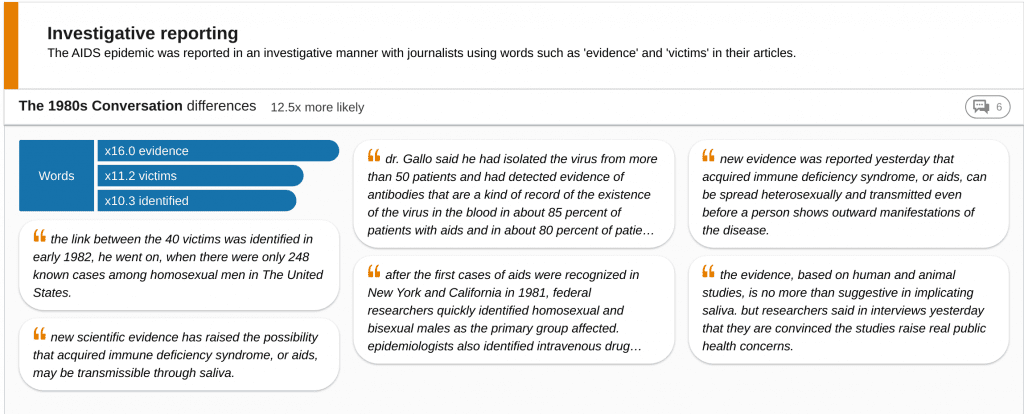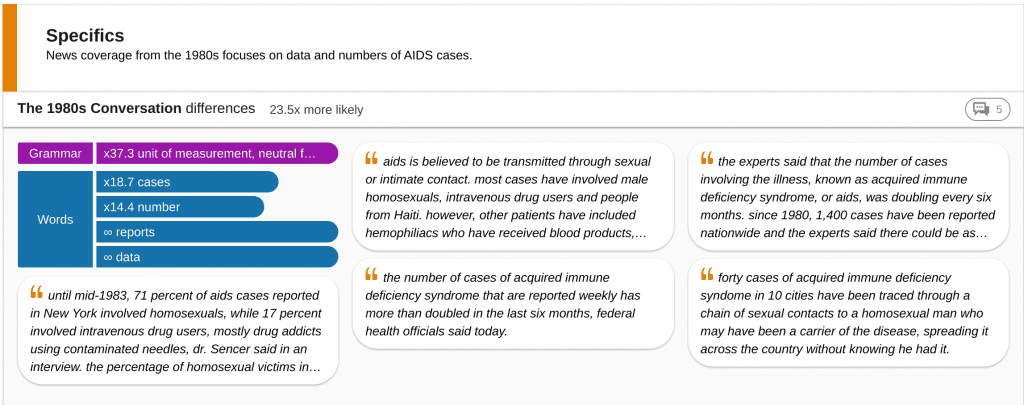It’s a sin: Analyzing media coverage of the AIDS epidemic over time

Since the AIDS epidemic (acquired immune deficiency syndrome) tore through the gay community back in the 1980s, reporting on the subject has been controversial. Despite hundreds of thousands of lives being affected by the virus, awareness and education on the epidemic has been fairly insubstantial.
The premiere of Russell T Davies’ limited series, It’s A Sin, has brought to life many forgotten stories and voices of the AIDS crisis, sparking an important public conversation. Media coverage on HIV and AIDS has intensified as a result. Yet in 1981, when the first case of an AIDS-related illness was reported, this wasn’t the case.
At Relative Insight, we’re in the business of language and linguistics, so we set out to analyse the way news coverage around HIV and AIDS has changed over time. We wanted to gauge exactly how the dialogue has changed from the 1980s to today.
TEXT ANALYSIS IN ACTION
To find out, we turned to text analysis. Firstly, we collated hundreds of news articles published between 1981 and 1986 – the initial years of the AIDS epidemic. Then, we gathered current media coverage of HIV/AIDS, to create a data set representative of the conversation in 2021.
After uploading this huge amount of data into the Relative Insight platform, we created our comparison: news coverage from the 1980s vs 2021. Using text analysis, Relative Insight can compare two or more language assets to reveal the differences in words, topics, grammar, phrases and emotion.
Disclaimer: News coverage around HIV/AIDS has increased in light of Channel 4’s series It’s A Sin. However, the majority of articles in this analysis discuss HIV itself, rather than reviewing the show. Here’s what we found.
The 1980s Conversation
Uncertainty
In the initial stages of the HIV outbreak, there was a lot of uncertainty about the virus. Newspapers called it a mystery disorder, an unknown condition with no known cause or cure. During this period, cautious language such as may, appears and according to is used 15.4x more.
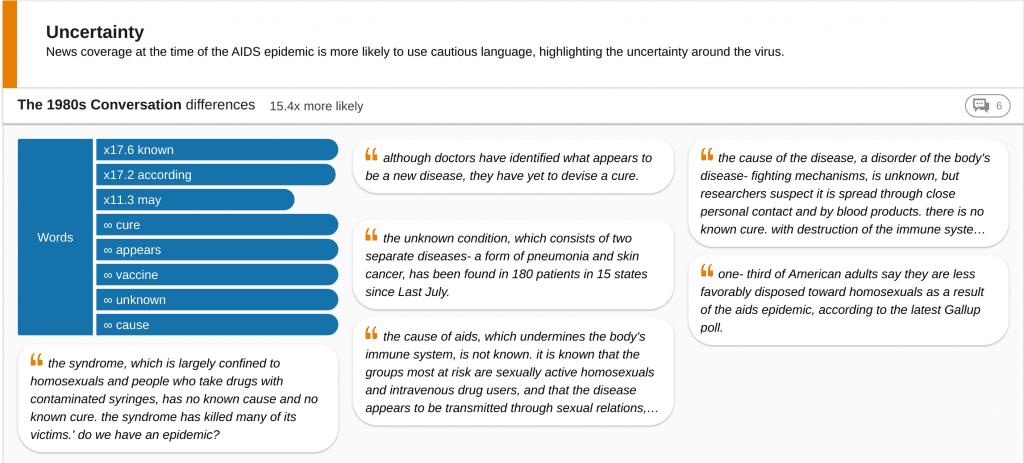

Legitimate sources and scientific research
As is the case with any new disease or virus, media coverage on AIDS was largely focused on scientific and medical research. Articles were infinitely more likely to quote professional opinions from the likes of researchers, scientists and doctors. This highlights the fact that little was known to the public. Experts were accountable for the information distributed.
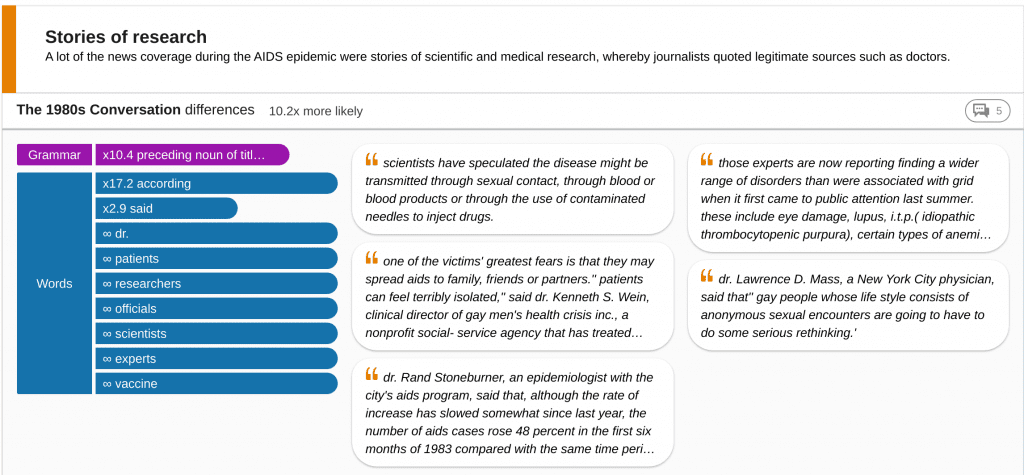

Furthermore, the tone used by the media is crucial as it often affects public opinion. In the 1980s, media reports on HIV/AIDS were impersonal. People affected by the virus were simply cases and numbers, rather than human beings. The epidemic was reported in an investigative manner, with journalists 12.5x more likely to refer to evidence and victims, again over people.
Fear and worries
AIDS caused fear among many communities worldwide. And while the press captured the zeitgeist of the early 1980s, they also exacerbated an atmosphere of panic. News coverage utilised loaded language and talked of a deadly illness, risk and danger.


The 2021 Conversation
Humanising the AIDS epidemic
In comparison to news coverage of the 1980s, media coverage today humanises the AIDS epidemic. Linguistically, this is highlighted by words such as friends, memories and people, which appear 9.6x more in the 2021 conversation. Articles are often retrospective. In looking back at the AIDS epidemic, journalists give voice to the hundreds of stories which have been lost.
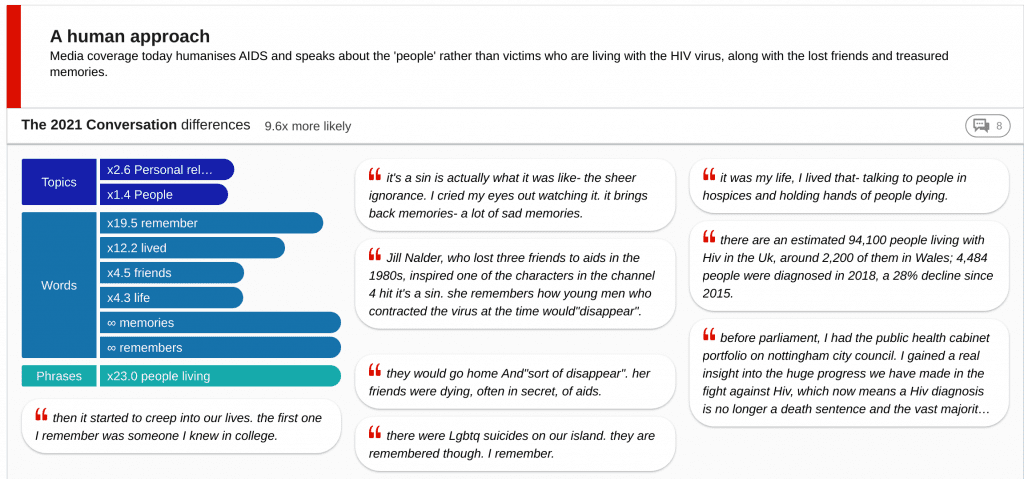

Personal accounts
Similarly, news coverage adopts a personalised tone. Today, articles include personal accounts of people living with HIV. The use of the pronoun I is 5.8x more prevalent in comparison to 1980s media. Stories show the perspective of the HIV patient, in place of expert opinions and medical accounts.
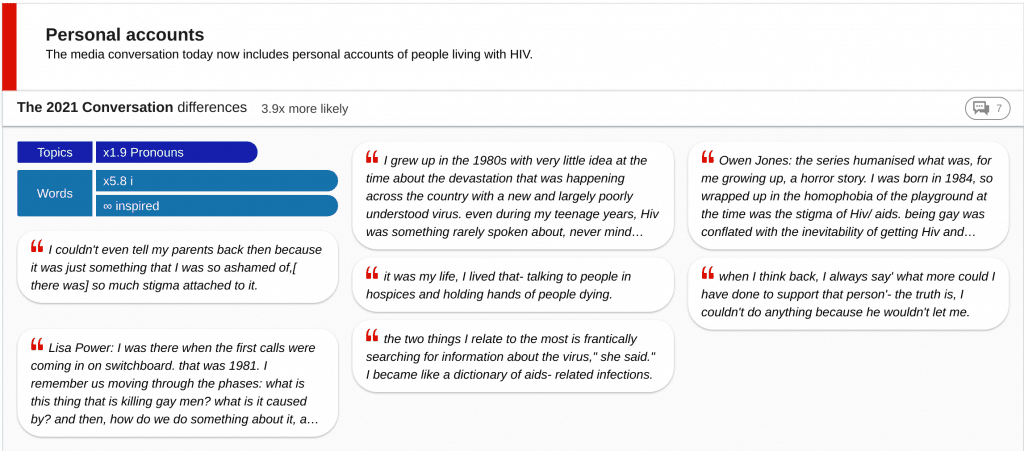

The fight towards understanding and equality
In 1996, scientists found a treatment for HIV. To this day, it remains one of the biggest achievements in modern medicine. However, the history of the AIDS epidemic still passes people by. Contemporary journalists are 3.2x more likely to discuss topics such as understanding, change and knowledge throughout their writing. Although activism has raised awareness, there is still a fight to end the stigma associated with HIV.
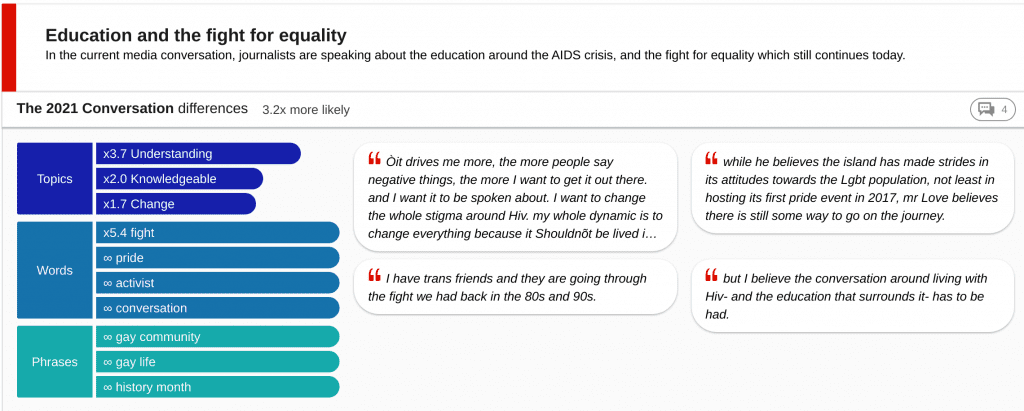

No matter what the subject is, media has the power to shape the social context of a historical moment in time. The choice of language and tone used throughout news reports can ultimately affect public perception and personal behaviour.
But what does this mean for you? Analysing media coverage is a unique way to understand how topics and brands are being discussed. This is beneficial to brands, agencies and organisations as media is highly influential in shaping consumer perceptions and behaviour.
Relative Insight can compare any language asset – from news articles to social listening data and reviews. Get in touch to find out more!
